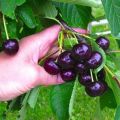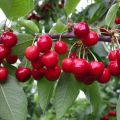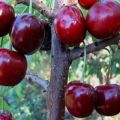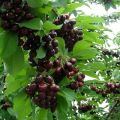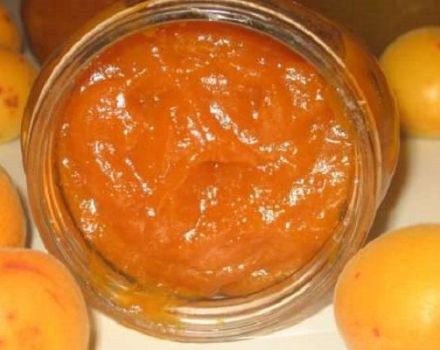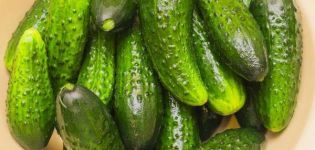Description of the cherry variety Lyubimitsa Astakhova, planting and care scheme
More recently, gardeners and gardeners in the middle zone of our country could not even imagine that delicious and juicy cherries could be grown and harvested on their plots. But thanks to the many years of work of breeders, the cultivation of this tree is now possible even in the coldest regions of the country. The cherry of the Lyubimitsa Astakhova variety is just such a fruit tree.
Origin and region of cultivation
The Bryansk Research Institute of Lupina is an innovator in the development of new varieties of fruit plants, and the leading role in the development of the sweet cherry variety Lyubimitsa Astakhova belongs to the famous breeder - academician Kanshina. The cherry got its name thanks to her husband, the famous scientist Astakhov. Another name for the hybrid variety of this cherry is "In memory of Astakhov".
A new frost-resistant species of sweet cherry was registered in 2011 and is recommended for cultivation in the central regions of the country, in the Urals, the Non-Black Earth Region and in the southern regions. The new hybrid was derived from the Leningrad and Voronezh plant varieties.
Therefore, gardeners of the Moscow region are now with great pleasure growing fruit crops in orchards and vegetable gardens.

Advantages and disadvantages of the Memory of Astakhov
Although the cherry in Memory of Astakhov is a hybrid variety, it has both advantages and disadvantages.
Advantages:
- Resistant to temperature extremes and cold climates.
- High quality fruit and taste.
- With proper care, the crop shows high yields.
- Since the variety is hybrid, there is resistance to some diseases.
- Small size of the tree.
Disadvantages:
- The plant does not tolerate frost well during the flowering period.
- The fruit crop has poor self-pollination rates.
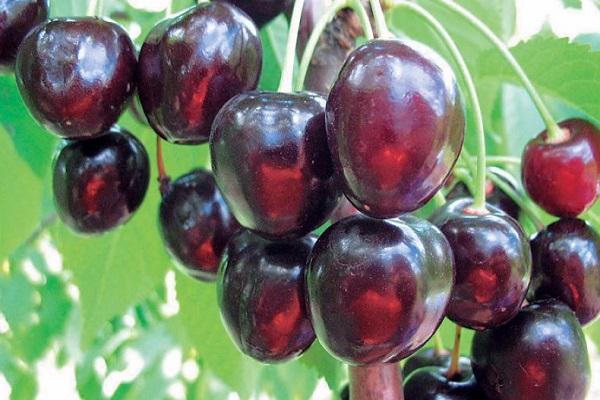
Important! Winter frost-resistant sweet cherry Lyubimitsa Astakhova has no particular difficulties in care, therefore it is suitable for growing even for a novice gardener.
Description of the variety
Sweet cherry varieties Lyubimitsa Astakhova differs from their cultural counterparts in late ripening, large fruits and the ability to grow in regions with different climatic conditions.
The height of the tree and the branching of the crown
Young cherry trees are characterized by fast growth rates.An adult plant grows to an average size of 3.5 to 4 meters. The oval-shaped crown does not differ in its density, which allows the sun's rays to reach the fruits unhindered.
The leaves are green at the ends.

Pollinators and flowering
The active flowering of cherries Astakhov's favorite falls at the end of spring. And since the ability for self-pollination in a tree is poorly developed, then in the absence of correct neighbors, very few fruit ovaries are formed.
For good fruiting, the tree needs other varieties of culture, which it is desirable to plant at the same time. Best suited for pollination varieties Tyutchevka, Large-fruited, Iput. Any other cherry variety that has the same flowering time can become a pollinator for Astakhov's Favorite.
Also, cherry or cherry trees planted in neighboring vegetable gardens and orchards will become pollinators.
Fruit ripening and yield
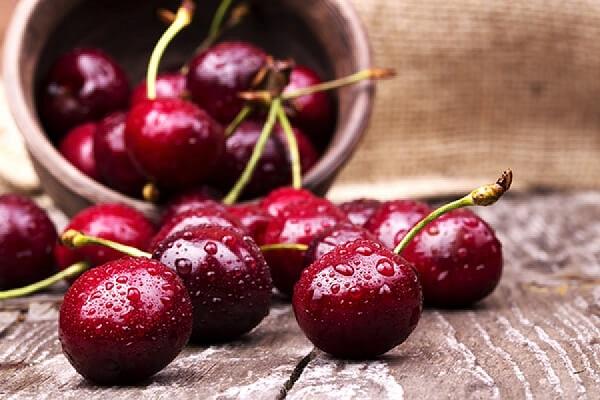
Important! Sweet cherry varieties Lyubimitsa Astakhova begins to bear fruit abundantly in the 5th year of growth.
Proper tree care allows you to harvest delicious and juicy berries from mid-July. The crop does not have a periodicity of fruiting, so the crop appears annually. Large fruits have an average weight of 5-6g, but individual berries can weigh up to 7.5-8g. A small cherry tree produces an average of 10-15 kg of berries per season.
Sweet cherries of this variety are also grown on an industrial scale.
Transportability and use of berries
With a juicy pulp, the fruits have a dense skin that allows you to transport the crop over long distances without losing the appearance and taste of the berries.
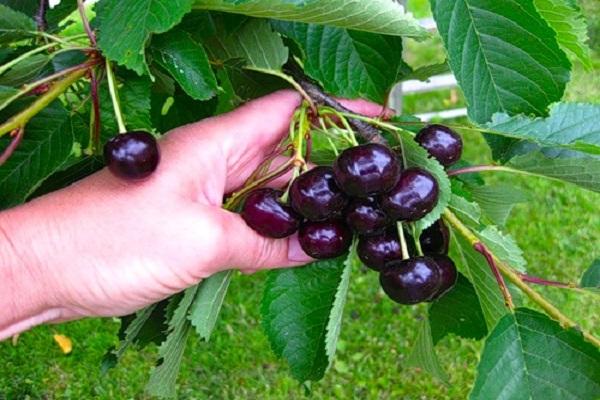
Because of its sweet taste, this cherry variety is widely used in cooking. Besides the fact that the fruits are eaten fresh, they are boiled, dried and frozen. They also make nectars, juices, process them into preserves, jams and confitures.
Characteristics of culture
The cherry variety in Memory of Astakhov is hybrid, therefore it has distinctive features that allow you to grow a tree in any climatic conditions.
Sustainability
When developing new varieties of cherries, breeders take into account the climatic conditions of the regions where the crop will be grown and susceptibility to the most common diseases. Therefore, hybrid varieties of fruit crops receive new characteristics that simplify their care.
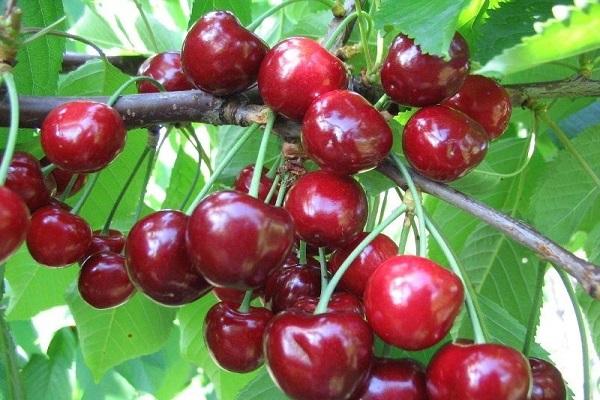
To frost
The new cherry variety was bred specifically for cultivation in the middle zone, the Urals and the Siberian region. Therefore, the plant's resistance to frost and a sharp drop in temperature is much higher than average. But young seedlings need to be additionally insulated in winter.
Drought
Fruit crops do not like excess moisture. But in a particularly arid climate, it requires additional irrigation work.
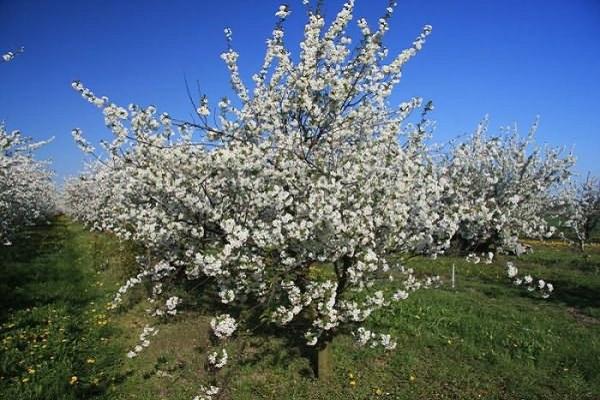
Pests and diseases
Hybrid varieties of fruit trees are created taking into account the increased immunity to many fungal diseases.
Lyubimitsa Astakhov has high resistance to coccomycosis and moniliosis. And in order to protect the plant from other diseases and pests, preventive measures are needed, which are carried out annually from spring to autumn.
Cherry propagation methods
Gardeners always want to increase the yield of tasty and healthy berries. But for this, the culture must be propagated.

Cherry varieties Lyubimitsa Astakhova can be propagated in several ways:
- Seeds. In this case, one should not expect that the new plant will have all the properties as the mother tree.
- Using cuttings. In an adult tree, the upper shoots are cut off, which after 2-3 months acquire their own root system and are ready for independent growth.
- But the best way for hybrid crops is to propagate by grafting cuttings onto an adult plant. This method rejuvenates already old trees, which have decreased productivity.
Important! A grafted cutting of any variety on a cherry Lyubimitsa Astakhova, can also serve as a tree pollinator.
Planting cherries in memory of Astakhov
The yield and the rate of development of the plant depend on how correctly and timely the planting work is carried out.
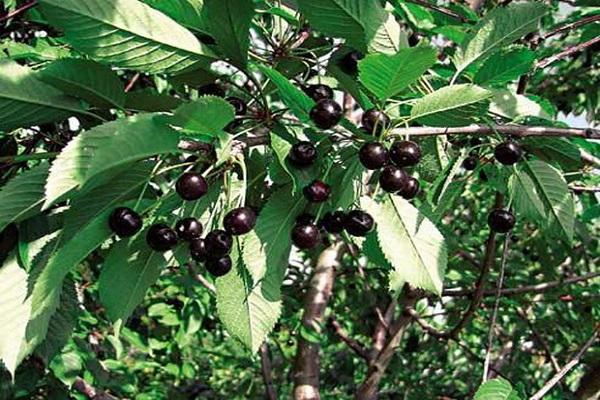
Choosing a healthy and strong seedling
It is recommended to buy hybrid seedlings only in official garden centers or nurseries. It is there that the varieties of plants that you need will be offered.
Sapling characteristics:
- The seedling is from 1 to 3 years old. Young plants take root faster and take root better after planting in open ground.
- The height of the seedling is from 80 cm to 1 m.
- The tree should have several strong, strong shoots, and the main trunk, which is also a conductor, should not have additional branches at the top.
- The root system of the seedling is well developed, without traces of rot and fungal formations.
- The bark of the tree is free of foreign spots and damage.
Before planting, the seedling is placed in water for 3-4 hours. If the root system is overdried, then the period of stay of the plant in the water before planting increases to 10-15 hours.
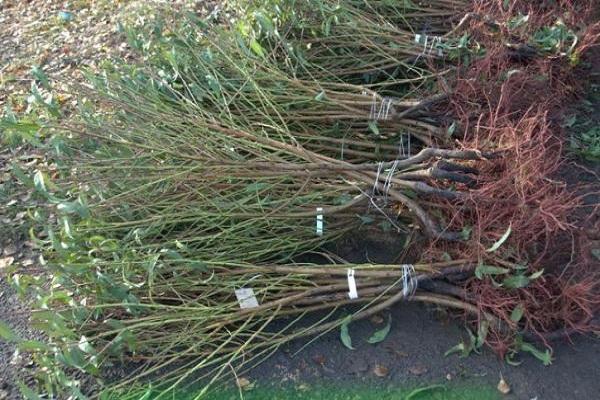
Dates and scheme of disembarkation
The timing of planting sweet cherries depends on the climatic conditions of the region where the tree will be grown.
In the southern regions with a warm climate, seedlings are planted in open ground in the fall, before the first night temperatures below zero. Young plants have time to take root and take root, so they can easily endure a mild winter.
But in the central part and northern regions, planting work is carried out in the spring months. Over the summer, the tree will get stronger and gain strength for wintering in the harsh conditions of cold winters.
It is preferable to plant sweet cherries on flat areas or small hills on the south or west side of the garden plot. The landing site should be well ventilated and illuminated by sunlight.

Planting pit preparation
Lime must be added to the soil with a high acid content. The landing site is chosen dry. A prerequisite is the absence of ground and soil waters.
Pits for the autumn planting of seedlings are prepared a month before the start of planting work:
- The depth of the pit is from 60 to 70 cm, the diameter is 80 to 90 cm.
- The filling of the pit consists of black soil, organic fertilizers, compost, phosphate and potassium supplements.
- The pit is filled with water and left for 3-4 weeks.
If the plants are planted in the spring, then the planting pit is still prepared in the fall.
Landing algorithm
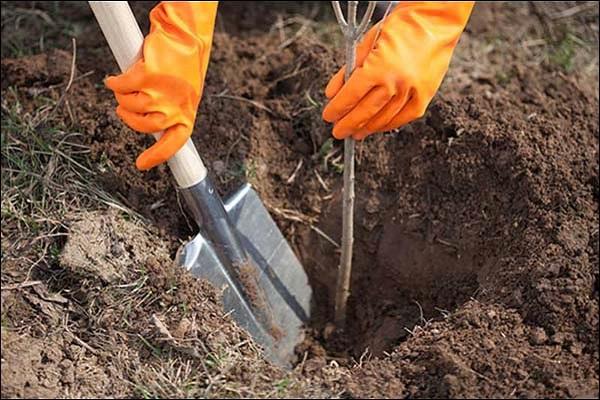
As soon as the pit is prepared for planting plants, soil is poured into it, into which the seedling is tightly set. The root system must be evenly distributed in the pit and sprinkled with earth so that there are no voids between the roots. Further, the soil around the young tree is carefully compacted and watered abundantly.
We organize competent care
To obtain a strong, strong tree that bears fruit abundantly, it is necessary to carry out a number of measures to care for it.
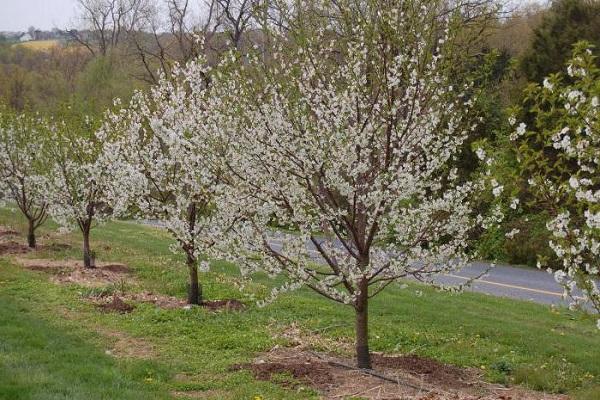
Top dressing and watering
Cherry does not like excess moisture, so the tree is watered 4-5 times per season. In especially arid regions, watering is done more often, as needed. For active growth and a bountiful harvest, the fruit crop needs fertilizers and dressings, which must be started in the 2nd year of the plant's life.
In spring, cherries are fertilized with organic matter and nitrogen fertilization, which help the plant to move away from the winter period and promote development during the vegetative period. During abundant flowering, the tree needs phosphate and potash fertilization, which are usually combined with irrigation work.
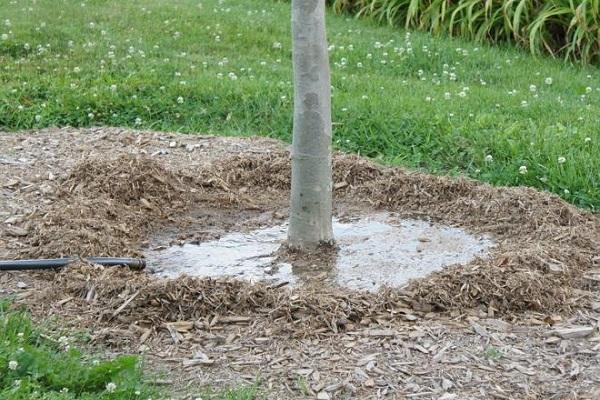
Weeding and loosening the trunk circle
Caring for the trunk circle consists in thoroughly loosening the soil and mulching with dry grass or sawdust.Once every 3 years, the soil around the trunk circle is dug up and compost is added to it. Also, the trunk circle is completely cleared of weeds that interfere with the normal growth of the tree.
Shaping and pruning
Sanitary pruning is done in the spring and fall. Her goal is to free the tree from frozen, broken, dry and diseased branches. Formative pruning is done annually in the spring, while the buds are not yet swollen. Every year, the strongest and densest branches are selected, which will lay the tiers of the plant. All other layers are clipped.
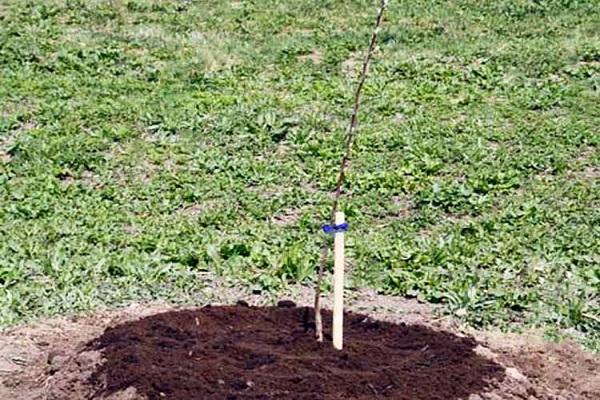
Timely pruning of cherries not only allows you to increase its fruiting, but also protects against the spread of diseases and pests.
Preventive treatment
Before the onset of the vegetative period, Lyubimitsa Astakhov's cherries are sprayed with a urea solution or special preparations that can resist the spread of fungal diseases and destroy the larvae of pests.
Bark protection
After spring and autumn pruning, the trunk and bark of the tree are protected by whitewashing, which saves the plant from sunburn and the development of various putrefactive processes.
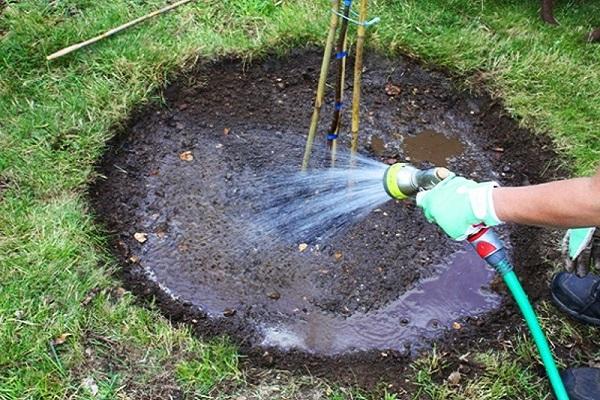
Preparing for winter
Before wintering, the tree is watered abundantly. This procedure gives additional protection to the root system from freezing.
Young trees are wrapped in burlap or any other materials that have a natural base and will not block oxygen access to the plant. In regions with frequent snowfall, a snowdrift is made around the plant, which protects the fruit crop from freezing.
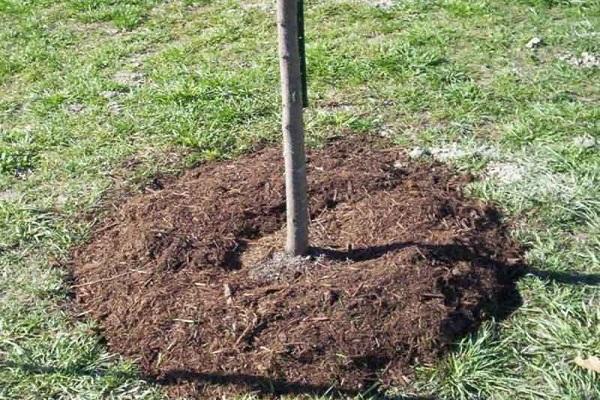
Reviews of summer residents about the variety
Maria Vasilievna, Kaluga.
Four years ago she persuaded her husband to buy the seedlings of Lyubimitsa Astakhov, and never regretted it. The first crop has already been harvested. The berries are delicious, juicy and sweet. We eat mostly fresh, but in the future I plan to make compotes and jams.
Egor Petrovich, Vladimir.
Several years ago, the nursery advised me to buy a new cherry variety, Lyubimitsa Astakhova. The yield is excellent, does not require special care, and is resistant to diseases.


